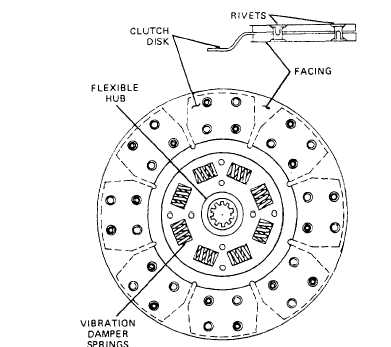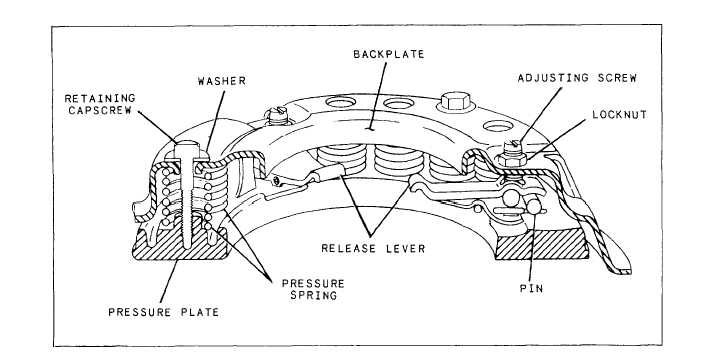
Figure 7-2. - Friction disk clutch with flexible center.
It also contains a spring arrangement and a pressure plate (fig. 7-3) for pressing the disk tightly against the face of the flywheel. The friction disk is splined to the clutch shaft. The splines consist of two sets of teeth: an internal set on the hub of the friction disk and a matching external set on the clutch shaft. They permit the friction disk to slide back and forth along the shaft but force the disk and the shaft to rotate together.
The flywheel, attached to the end of the engine crankshaft, rotates when the engine is running. When the clutch is engaged in the coupling position, the friction disk is held tightly against the flywheel by the pressure plate springs, so that it rotates with the flywheel. This rotary motion is carried through the friction disk and clutch shaft to the transmission.
To disengage (or uncouple) the clutch, the clutch operator presses the clutch pedal down. This causes the clutch fork to pivot so the clutch release bearing is forced inward. As the release bearing is moved inward, it operates the pressure plate release levers (fig. 7-4). The release levers take up the spring pressure and lift the pressure plate away from the friction disk. The friction disk is no longer pressed against the flywheel face, and the engine can run independently of the power train. Releasing the clutch pedal permits the clutch fork to disengage the release bearing, so the springs will again cause the pressure plate to force the friction disk against the flywheel face to rotate together.
There are two types of clutch operating systems: mechanical and hydraulic. The mechanical system is the most common and uses a rod type of linkage (fig. 7-5);

Figure 7-3. - Pressure plate and related parts.
Continue Reading